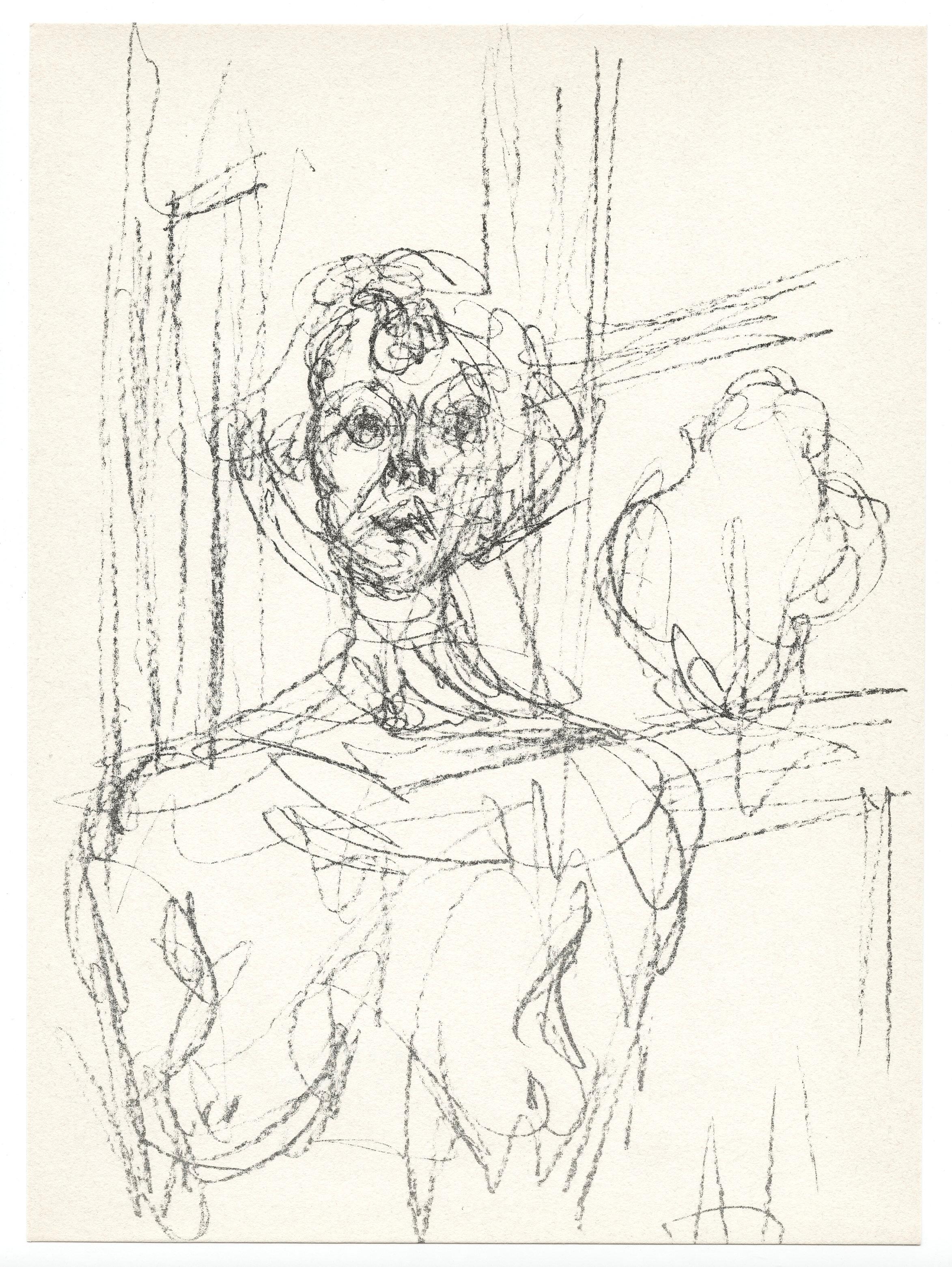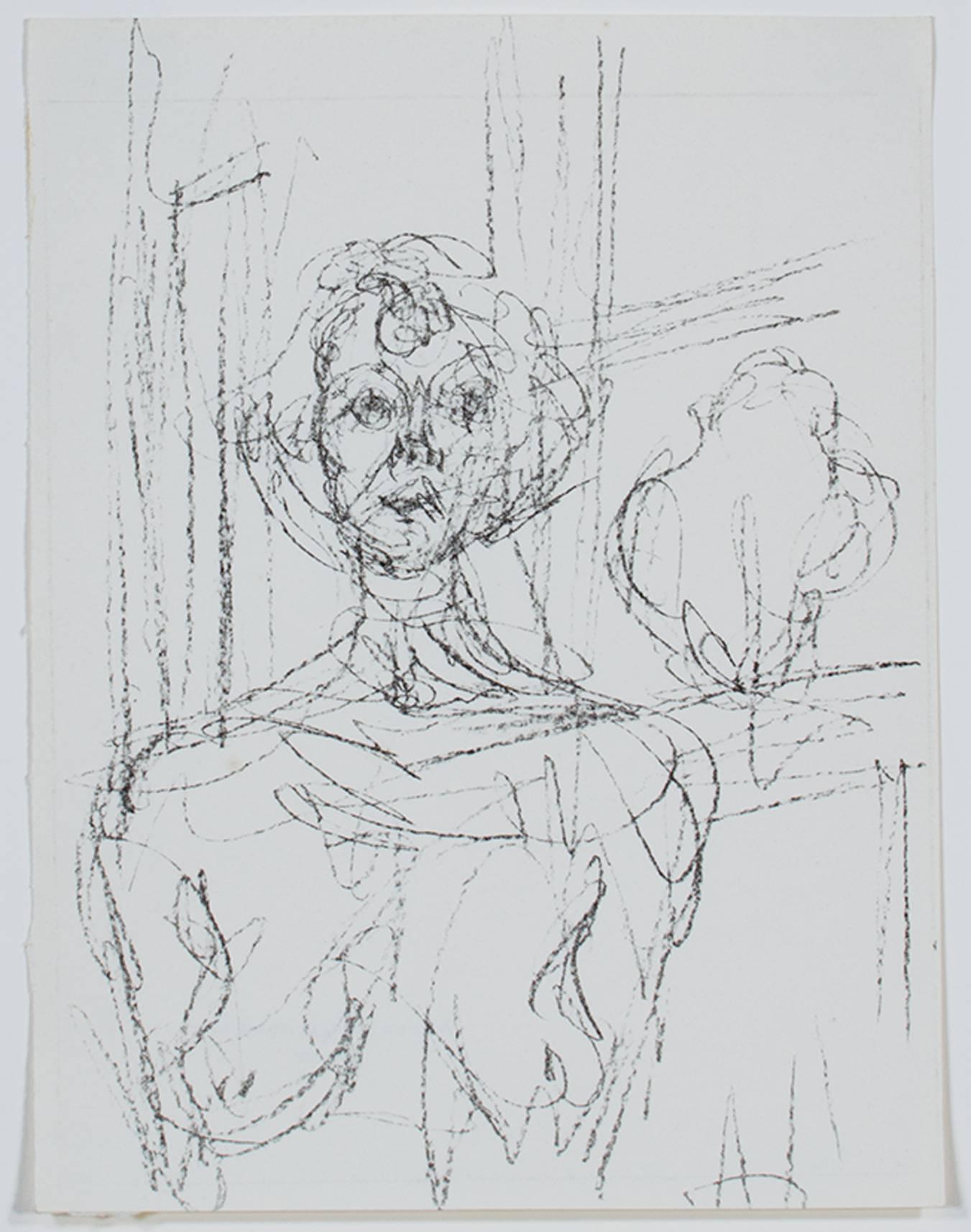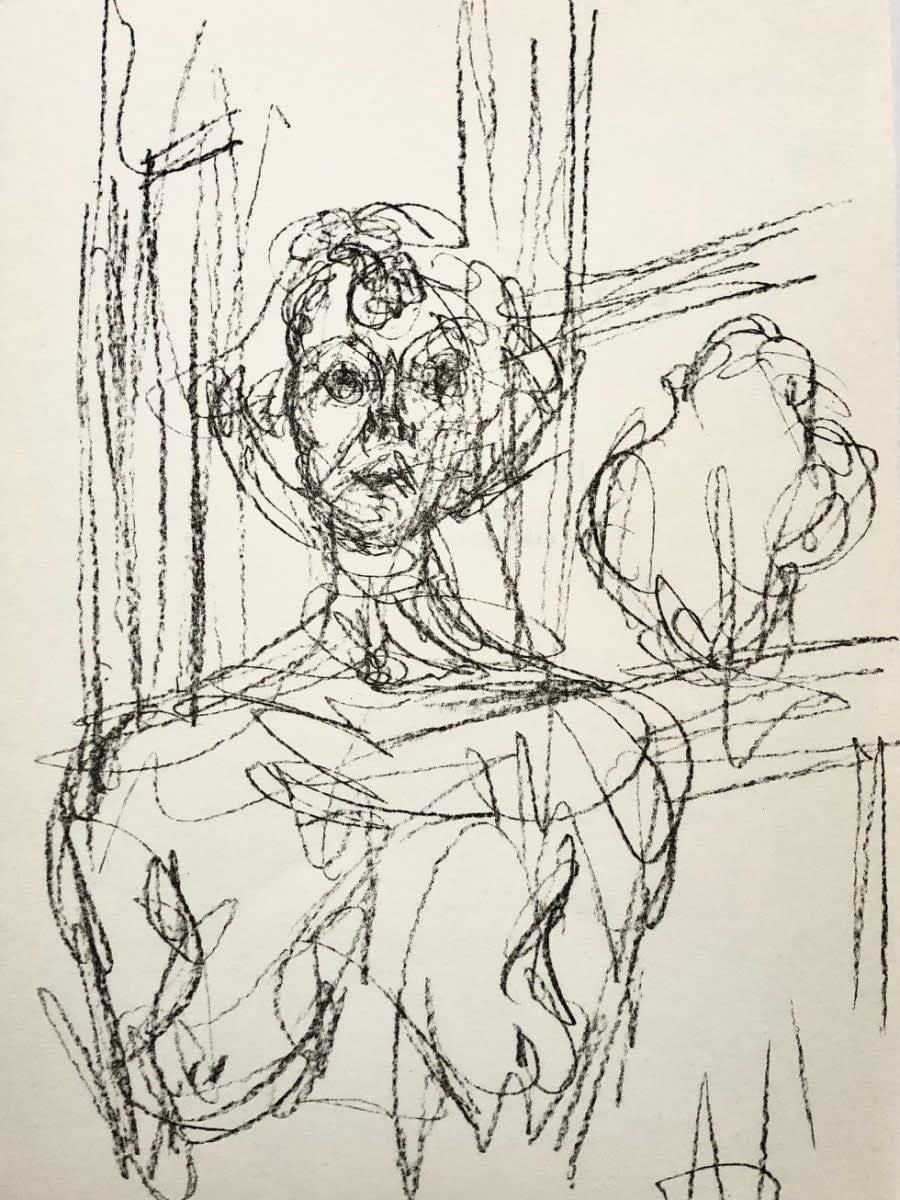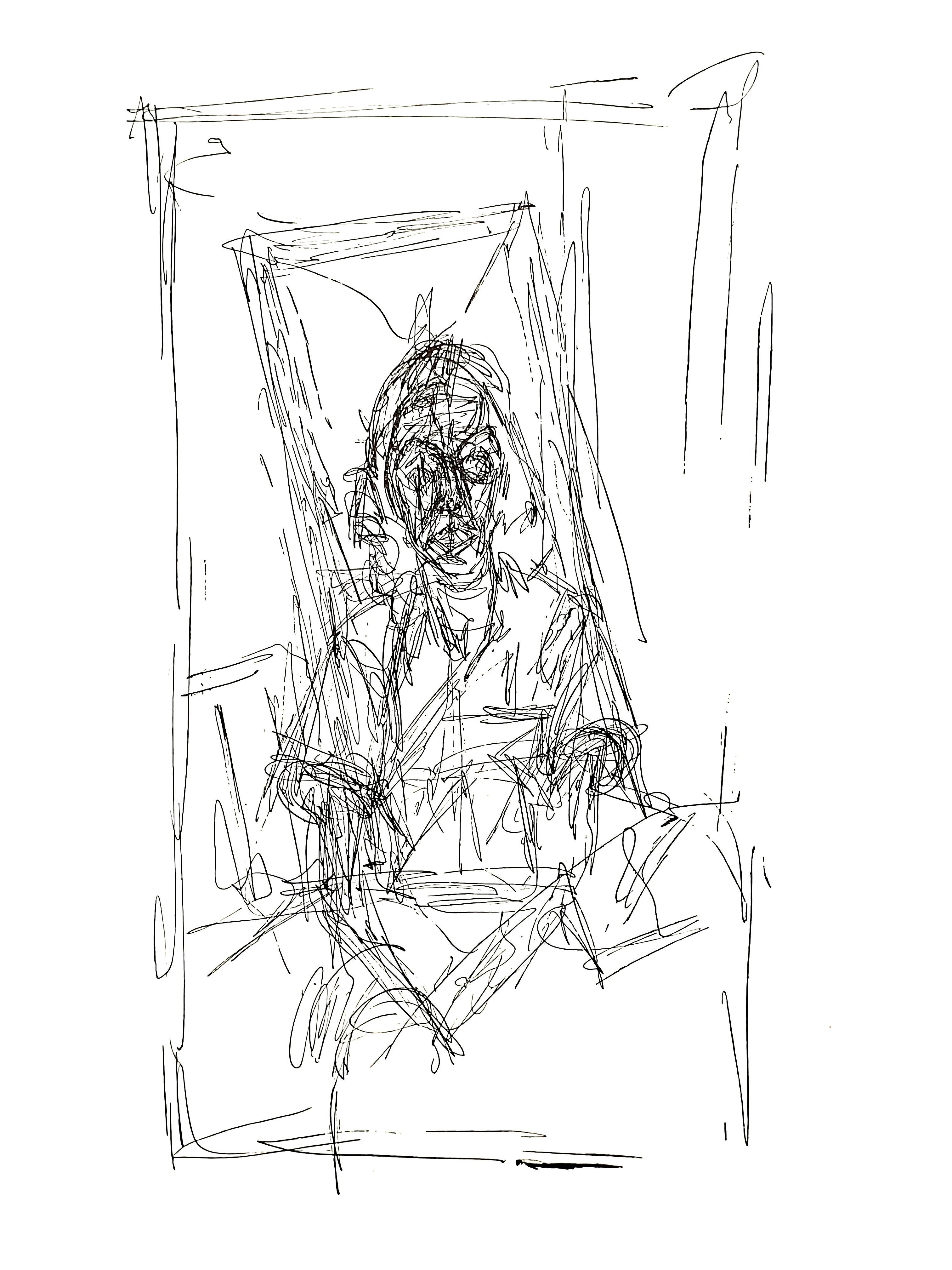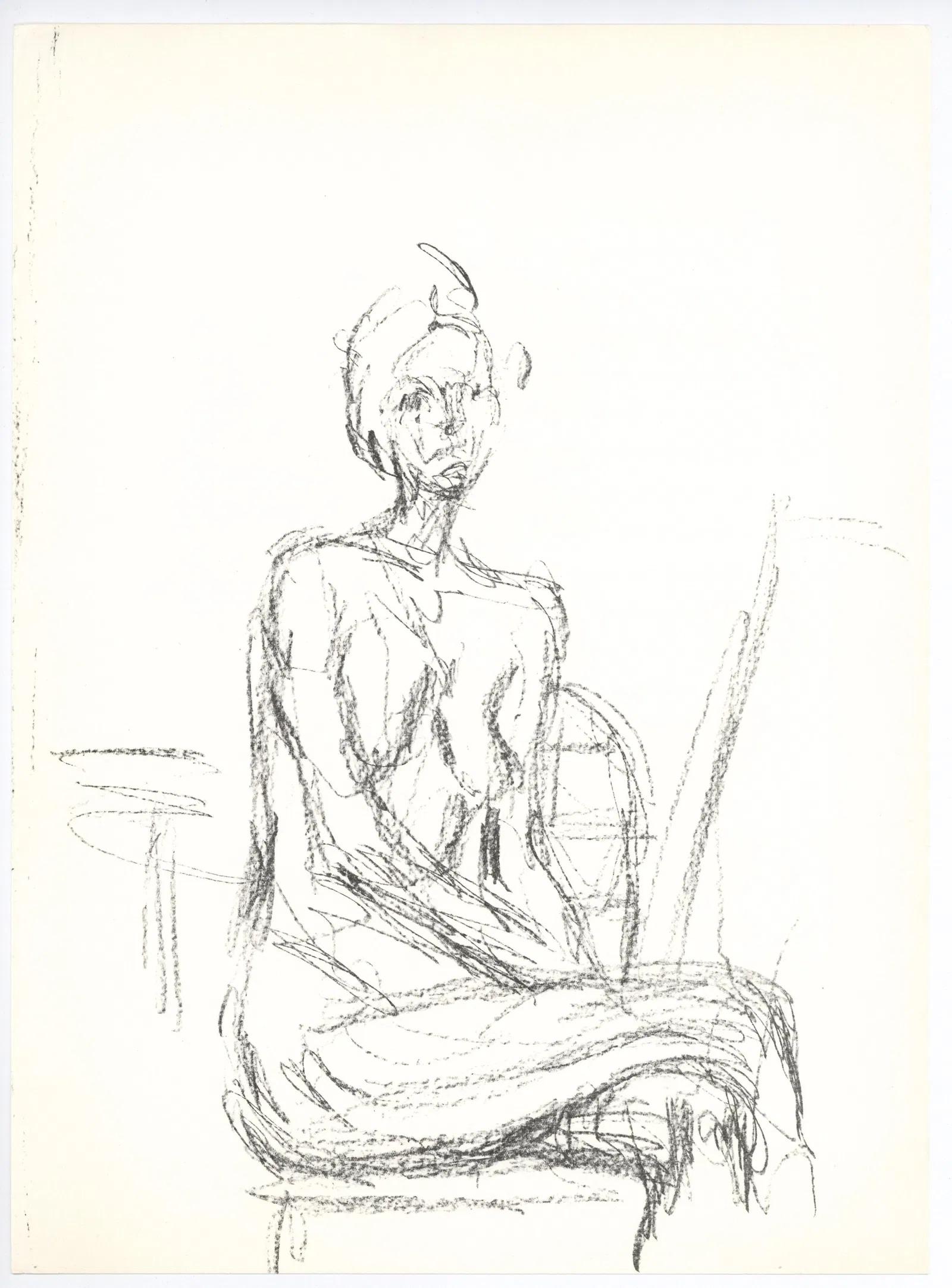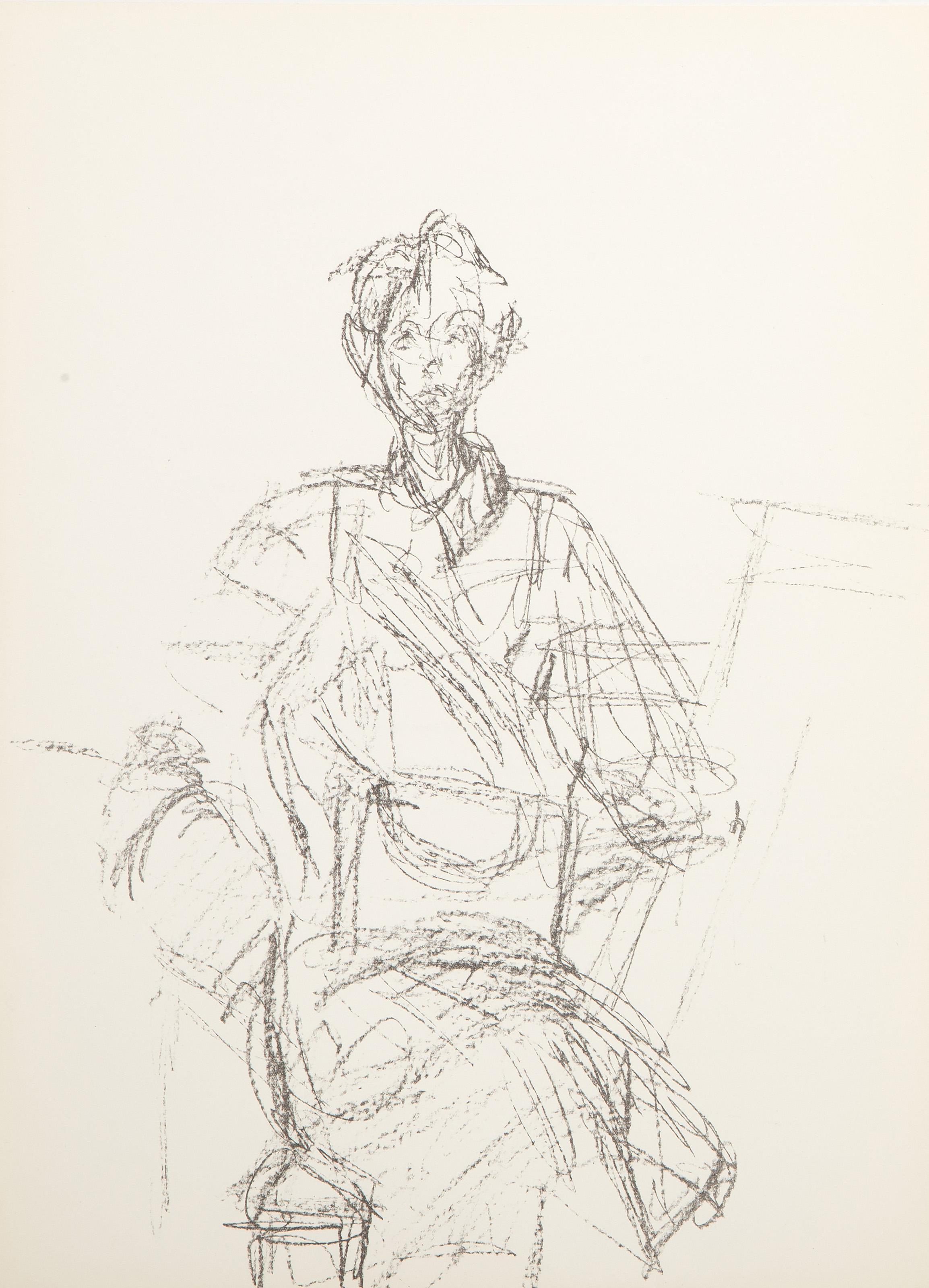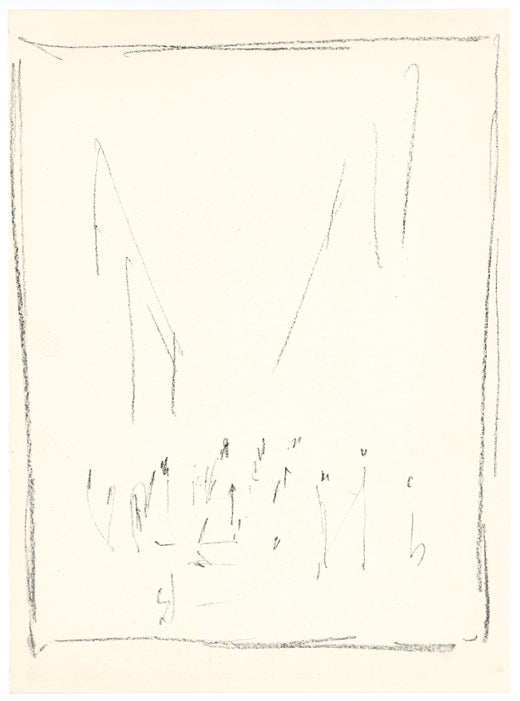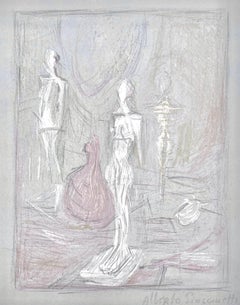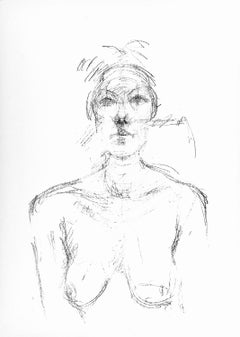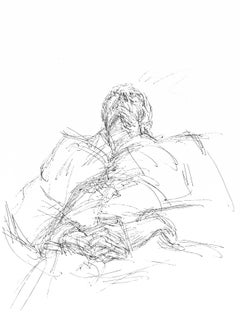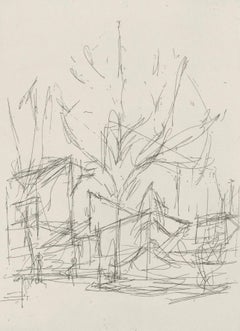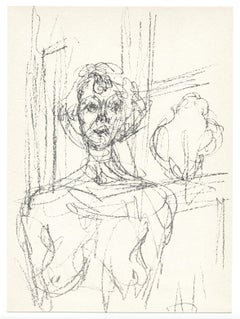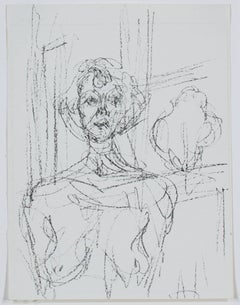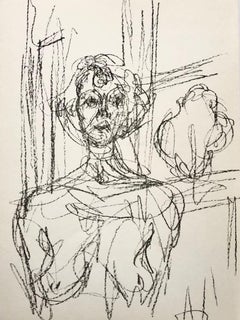This exquisite lithograph by Alberto Giacometti (1901–1966), titled Annette, from the album Prints from the Mourlot Press, exhibition sponsored by the French Embassy, circulated by the Traveling Exhibition Service of the National Collection of Fine Arts, Smithsonian Institution 1964–1965, originates from the 1964 edition published by Fernand Mourlot, Paris, in collaboration with the Embassy of France, Washington, D.C., and the Smithsonian Institution, Washington D.C., and printed by Mourlot Freres, Paris, October 27, 1964. This lithograph captures Giacometti’s distinct approach to portraiture, defined by trembling lines and psychological depth that distill the essence of human presence into a study of perception and being. Annette, his wife and muse, appears as both intimate subject and universal archetype, embodying the fragility and endurance that pervade Giacometti’s entire oeuvre.
Executed as a lithograph on velin d'Arches paper, this work measures 10 x 7.5 inches. Unsigned and unnumbered as issued. The edition exemplifies the refined craftsmanship of Mourlot Freres and highlights Giacometti’s mastery of line and form within the existential context of postwar modernism.
Artwork Details:
Artist: Alberto Giacometti (1901–1966)
Title: Annette, from the album Prints from the Mourlot Press
Medium: Lithograph on velin d'Arches paper
Dimensions: 10 x 7.5 inches (25.4 x 19.05 cm)
Inscription: Unsigned and unnumbered as issued
Date: 1964
Publisher: Fernand Mourlot, Paris, in collaboration with the Embassy of France, Washington, D.C., and the Smithsonian Institution, Washington D.C.
Printer: Mourlot Freres, Paris
Condition: Well preserved, consistent with age and medium
Provenance: From the album Prints from the Mourlot Press, published by Fernand Mourlot, Paris, 1964
Notes:
Excerpted from the album, This exhibition is a manifestation of Franco-American friendship and we would be very happy if it is of interest to all those who visit it. I wish to thank Mrs. Annemarie Pope for proposing and organizing this exhibition of the work of the artists who have used our press. We are honored that Mr. Herve Alphand, Ambassador of France to the United States, and Mr. Edouard Morot-Sir, Cultural Counsellor at the French Embassy in New York, will sponsor this exhibition. I express to them my thanks and appreciation. As for the artists themselves, who executed the originals contained in this catalogue, I can only say simply, "Thank you." They are all friends. We would have liked to include not just the twenty-four illustrations in this small book, but many more. During the year 1963, we lost three great artists who were faithful friends of our press. Thanks to Mrs. Georges Braque, Mr. Louis Carre, and Mr. Edouard Dermit, who have been able to pay our respects to Georges Braque, Jacques Villon and Jean Cocteau. The great Henri Matisse is also with us, since Mrs. Du-thuit-Matisse and her brothers have allowed us to use an unpublished original lithograph. Thanks to them all for their generosity. —Fernand Mourlot. The lithography at Mourlot printing press by Jean Adhemar, Curator of prints at the Bibliotheque nationale. Acknowledgments, Fernand Mourlot has long been the acknowledged master printer of France in every field, from lithographs to fine books to posters. The unfailing quality of his work commands the respect of museums, collectors, and most important of all, the artists themselves. Every product of his workshop bears the mark of Mourlot's discipline and craft and can truly be called an ideal collaboration between artist and artisan. The result of years of thoughtful planning, this special exhibition presents an accurate portrait of the Mourlot Press. We are greatly indebted to Fernand Mourlot, who made the selection, supervised the production of the catalogue, and gave endless time and energy to the details of preparation. This album was finished in Paris on 27th October 1964. The original lithographs and the reproductions were printed on the presses of Mourlot. The Imprimerie Nationale, Director Andre Brignole, was responsible for the typography. The edition has been limited to MM examples on Velin d'Arches and CC on Velin de Rives, reserved for the artists, the staff and the friends of the Imprimerie Mourlot.
About the Publication:
Prints from the Mourlot Press, published in Paris by Fernand Mourlot in 1964 in collaboration with the Embassy of France and the Smithsonian Institution, celebrated the profound artistic partnerships that defined 20th-century printmaking. The portfolio accompanied a traveling exhibition organized by the Smithsonian’s National Collection of Fine Arts and presented at major institutions across the United States between 1964 and 1965. Containing twenty-four original lithographs by leading modern artists—including Pablo Picasso, Henri Matisse, Georges Braque, Joan Miro, Marc Chagall, Alexander Calder, Fernand Leger, Alberto Giacometti, and Jean Cocteau—the publication chronicled the collaborative artistry of Mourlot Freres, whose Paris workshop elevated lithography to a fine art. Each plate demonstrated the mastery of color, composition, and craftsmanship that defined postwar printmaking, while the edition itself stood as a symbol of Franco-American cultural exchange.
About the Artist:
Alberto Giacometti (1901–1966) was a Swiss sculptor, painter, and draughtsman whose hauntingly elongated figures and existential vision redefined modern art and made him one of the most influential artists of the 20th century. Born in Borgonovo, Switzerland, into an artistic family—his father, Giovanni Giacometti, was a noted Post-Impressionist—he was immersed in art from an early age before studying in Geneva and moving to Paris in 1922, where he became part of the city’s avant-garde alongside Pablo Picasso, Alexander Calder, Salvador Dali, Joan Miro, Wassily Kandinsky, Marcel Duchamp, and Man Ray. In the 1920s and 1930s, Giacometti explored Cubism and Surrealism, creating symbolic and dreamlike sculptures such as Suspended Ball (1930–31) and The Palace at 4 A.M. (1932), which reflected the influence of Dali, Duchamp, and Man Ray. By the 1940s, he abandoned Surrealism to pursue a deeply personal exploration of the human condition, developing his iconic attenuated figures that embodied both fragility and resilience. His signature sculptures—L’Homme qui marche I (Walking Man I), Femme debout, and Le Chariot—expressed the isolation, endurance, and vulnerability of modern existence, echoing the existential philosophy of Jean-Paul Sartre and Simone de Beauvoir. Giacometti’s figures, stripped of mass yet monumental in spirit, symbolized humanity’s search for meaning in a postwar world, while his paintings and drawings—portraits of his brother Diego, his wife Annette, and his friends—captured the psychological depth of perception with trembling, repetitive lines that blurred the boundary between body and soul. His friendships with Picasso, Calder, Miro, and Kandinsky shaped his understanding of form, motion, and space, while his philosophical engagement with Duchamp and Man Ray deepened his inquiry into the nature of reality and perception. Working obsessively in his modest Montparnasse studio, Giacometti pursued art as an existential act—destroying and rebuilding his figures in an endless search for truth. His influence on postwar art was immense, shaping the work of Henry Moore, Francis Bacon, Louise Bourgeois, Lucian Freud, and later contemporary sculptors such as Antony Gormley and Anselm Kiefer. His aesthetic also resonated beyond sculpture, influencing fashion, photography, and architecture through his vision of form, isolation, and proportion. Giacometti’s work is represented in major museum collections including MoMA, the Tate Modern, and the Centre Pompidou, and continues to inspire artists, collectors, and thinkers worldwide. Standing alongside Pablo Picasso, Alexander Calder, Salvador Dali, Joan Miro, Wassily Kandinsky, Marcel Duchamp, and Man Ray, Giacometti remains a towering figure in modern art—a sculptor-philosopher who transformed the human form into a universal symbol of resilience and reflection. His highest auction record was achieved by L’Homme qui marche I (Walking Man I), which sold for 141.3 million USD at Sotheby’s, London, on February 3, 2010, reaffirming Alberto Giacometti’s enduring legacy as one of the most visionary, profound, and collectible artists in the history of modern art.
Alberto Giacometti Annette Prints from the Mourlot Press Fernand Mourlot Paris 1964 lithograph Modernism Existentialism.
